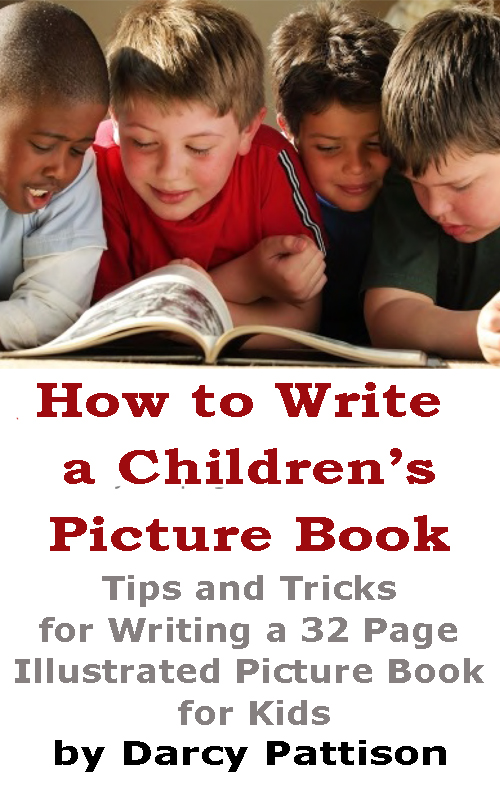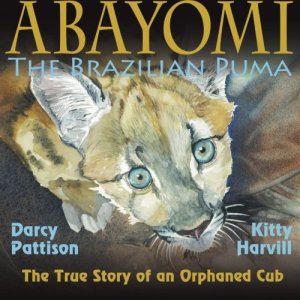 .
.
Abayomi, the Brazilian Puma: The True Story of an Orphaned Cub
by Darci Pattison & Kitty Harvill, illustrator
Mims House 2014
978-1-62944-001-9
Ages 6 to 8 32 pages
.
“From the award-winning team that brought you WISDOM, THE MIDWAY ALBATROSS, comes a new heart-warming story of an orphaned puma cub. A mother puma, an attempt to steal a chicken, and an angry chicken farmer—the search is on for orphaned cubs. Will the scientists be able to find the cubs before their time runs out?
In this “Biography in Text and Art,” Harvill takes original photos as references to create accurate wildlife illustrations. Pattison’s careful research, vetted by scientists in the field, brings to life this true story of an infant cub that must face a complicated world alone—and find a way to survive.”
Opening
“In the far south, in Brazil, a puma cub was born in the early spring month of October 2012.”
The Story
Brazil, once covered by deep forests, now houses more people in cities and villages. To keep their cars moving more sugar plantations took over much of the remaining forest. Pumas, and other wild animals, must live closer to man and find it more difficult to hunt for food. One night, a female puma spotted some chickens in a farmer’s barn. Their normal diet of armadillos, capybaras, and ring-tailed coatis were getting hard to find. The puma needed to feed her cub and the chickens were easy prey. But she fell victim to a farmer’s trap. Before wildlife officials could get to the farm and safely remove the puma, she died.
Alone, hungry, and no mother to help, her cub had to hunt, but would he know how? Wildlife officials followed the mother puma’s trail trying to find her cubs but came up empty. Twenty-three days after his mom left and never returned, dogs a mile away from home cornered the cub. Dehydration and starvation ravished the cub’s body, stealing the energy he needed to walk. He staggered from place to place. This time wild life officials safely caught the cub, naming him Abayomi, which means happy meeting in the Tupi-Guarni native language. Scientists did what was needed so this little guy could return to the wild. Were they successful?
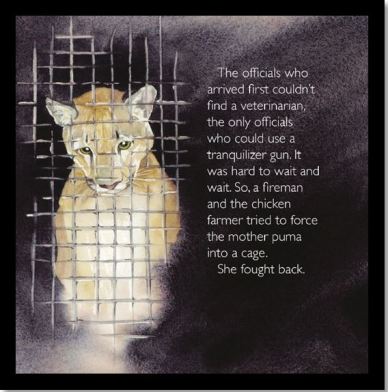
Review
The team of Darci Pattison and Kitty Harvill have made their second successful wildlife children’s book about a fascinating survivor. The first, Wisdom, the Midway Albatross, garnered starred reviews. Abayomi will undoubtedly do the same. With simple language and thoughtful prose, the story of Abayomi will come to life for schoolchildren, many of whom live in urban areas and have never seen a puma. Though the death of the mother puma was most likely gruesome, Pattison wrote,
“. . . She fought back. Once, she hit her head hard against the side of the cage and was dazed. After hours of struggling, she died.”
The illustrations were just as easy on the subject. You see the puma in a cage and some chickens in a roost, but nothing more. Not one spittle of blood mentioned or seen. Children should not experience nightmares after reading Abayomi. All of the illustrations are soft watercolor renditions of actual locations in this true story, completely vetted by experts. Each image is realistic yet gentle on the eyes. The scrawny cub, shown from the backside, does not noticeably display starvation. The hips are noticeably larger due to a lack of abdominal body fat, yet not so much as to scare even the youngest children.
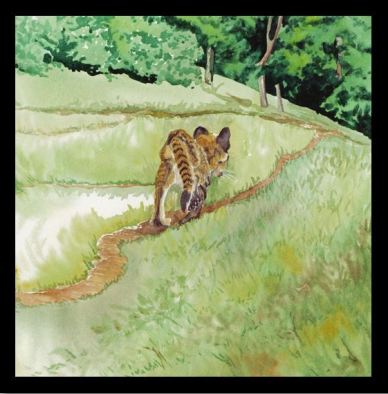
The book concludes with some facts about Abayomi, the Corridor Projects, and urbanization, along with some resources children can look up for more details. Children could write an interesting book report after reading Abayomi the Brazilian Puma. Pattison and Harvill make a splendid team that children, parents, and teachers should not ignore. Conservation and wildlife experts and scientists fact check Pattison’s research. Harvill uses photographs taken on site when painting her illustrations. The pair have made clear choices that make the books assessable to younger children, while still interesting older kids. (Yes, like myself.)
As with Wisdom, the Midway Albatross, Abayomi, the Brazilian Puma should be in school libraries and homeschooling bookshelves that cover wildlife, conservation, or the changing world. As starting points, Abayomi and Wisdom, are great resources for children. While not an expansive missive, these two books will guide students to other resources and further knowledge. The two books also allow younger children to learn about these subjects in a mild, non-scary manner that will peak curiosity, not provoke nightmares.

ABAYOMI, THE BRAZILIAN PUMA: THE TRUE STORY OF AN ORPHANED CUB. Text copyright © 2014 by Darci Pattison. Illustrations copyright © 2014 by Kitty Harvill. Reproduced by permission of the publisher, Mims House, Little Rock, AK.
.
Learn more about Abayomi, the Brazilian Puma HERE.
Get your copy of Abayomi, the Brazilian Puma at Amazon—B&N—Mims House—ask for it at your local bookstore.
.
Meet the author, Darci Pattison, at her website: http://www.darcypattison.com/
Meet the illustrator, Kitty Harvill, at her website: http://www.kharvillarte.com.br/artist.html
Find more Mims House stories at the publisher’s website: http://mimshouse.com/
.
Also by Darci Pattison

Saucy and Bubba, a Hansel and Gretel Tale

Vagabonds
.
.
.
.
.
.Also by Kitty Harvill
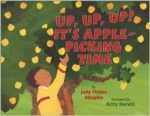
Up, Up, Up! It’s Apple-Picking Time
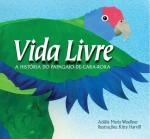
Vida Livre (published in Brazil)
.
.
.
.
.
Also New from Mims House

The Girl, the Gypsy, and the Gargoyle
.
.

Filed under:
5stars,
Children's Books,
Library Donated Books,
NonFiction,
Picture Book,
Series Tagged:
a changing world,
Abayomi,
Brazil,
conservation,
Darci Pattison,
forest depletion,
Kitty Harvill,
Mims House,
pumas,
wildlife,
wisdom 







 Wisdom the Midway Albatross: Surviving the Japanese Tsunami and Other Disasters for Over 60 Years
Wisdom the Midway Albatross: Surviving the Japanese Tsunami and Other Disasters for Over 60 Years
By Darcy Pattison
Illustrated by Kitty Harvill
Mims House
$11.99
ISBN: 978-0-9798621-7-5
Ages 4-8
On shelves now
If I had a better knowledge of my nonfiction children’s history then I might be able to tell you the exact moment that biographies of individual animals took off. Technically we’ve seen them for years, in books like the Newbery Honor winning Rascal (which is considered nonfiction in spite of some creative liberties) from 1963. The picture book animal biography feels comparatively new to me. I think they may have existed in spurts here and there but in the last ten years there’s been a veritable explosion of them on the scene. This is a very good thing. When done well a good animal bio can provide insight into an otherwise unapproachable species, foster concern beyond our own human lives, and give a glimpse into the wider natural world. True to life incredible journeys of wild animals are difficult to tell, though. If the animal is truly wild then how do you extrapolate its life without relying on fantasy and conjecture? Wisdom: The Midway Albatross offers at least one solution to that question. Add history to facts to the glorious innovation of banding wild animals and you have yourself a bird bio that’s easy to distinguish from the flock.
The life of your average everyday laysan albatross is not often a happy one. Particularly if you have had the monumentally bad luck to have been born around 1950. Having survived the trials of growing up, avoiding sharks, and even a 1952 tsunami, one little albatross lived and was banded by research scientists in the year 1956. After that time she had to survive tropical storms, delicious looking floating plastic and fishing lines until she was caught again (by the same scientist, no less) in 2002. Having survived all that, was she capable of living past the Japanese tsunami of 2011? Pattison follows the bird’s life closely, ending her book with facts about Wisdom (calling her “The Oldest Bird in the World”, which would have been my choice of title) as well as info on your average laysan albatross, and useful websites for further reading.
It’s more than just the story of one small bird and more than just some informational text about the life cycle of an albatross. Under Pattison’s hand Wisdom’s tale takes on an almost epic cycle. You start out thinking that this is just your average animal adventure and by the end you’re wondering how much we even understand about the natural world. If a lucky albatross, avoiding every seaborne calamity on record, can live at least to the age of sixty-one and continue to breed and brood, what other animals are blessed with such longevity? If there’s any problem at all it might be that Pattison repeats the refrain of “Somehow Gooney survived” almost too often. The temptation to do so is understandable but I worried that the momentous weight of that survival didn’t feel quite as powerful when heard so often.
While Pattison is known for her other books in the children’s literary sphere, artist Kitty Harvill’s work remains largely unknown. A wildlife artist and conservationist, Harvill’s watercolors in this book serve the words more than the other way around. They leave a good amount of space for the text, avoiding the pitfalls of some artists unfamiliar with the picture book world that slap white space and text on one page and an image on the other. One point that made me curious was how Harvill chose to deal with Pattison’s suppositions. We can extrapolate Wisdom’s life by knowing both our history of the region as well as the perils facing the bird’s kind. And while the author utilizes the word “somehow” very cleverly in the phrases that explain that she survived, Harvill accompanies these with images of pairs of birds. In many cases one albatross will fall prey to fishing lines or plastic treats while the other abstains. But since we are not specifically pointing to one of those birds and calling her “Wisdom”, the book gets away with it (and, I should note, never really shows any birds dying of sharks or storms, etc.).
It’s a book with a very small press, one going by the name of Mims House. When independent publishers create children’s literature the results are invariably mixed. In this particular case I was encouraged by the writing (and my familiarity with the author), the art to a certain extent, and the design. Though paperback, the paper quality is not bad. However I was a little disappointed in the font and layout. Though the text is expertly laid onto the images, weaving in and out of the pictures with ease, the font itself looks like something you might find in a child’s school report. I’m not entirely certain whether it’s the style or the size or a combination of the two, but whatever the case it’s a misleadingly poor element in what stands as a rather cool informational text.
I don’t usually go so far as to praise the blurbs of a book, but in this case. I’ll make an exception. Some clever soul not only thought to get the wise words of Newbery Honor author Kirby Larson (who penned her own nonfiction picture book Two Bobbies: A True Story of Hurricane Katrina Friendship and Survival) but also retired Senior Scientist Chandler S. Robbins. Now it sometimes doesn’t take much to get a scientist to blurb a picture book and normally my eyes glaze over about the time we see a degree appear, but in this particular case Robbins is an exceptional get since he’s the very guy who banded the bird back in 1956 in the first place. His words have an almost philosophical ring to them as well. He says at one point, “While I have grown old and gray and get around with the use of a cane, Wisdom still looks and acts just the same as the day I banded her.” Truth. Stranger than fiction.
As I mentioned before, had I been in charge of this book I would have gone whole hog and named it “Wisdom: The Oldest Bird in the World” or something along those lines. As it stands, Pattison has uncovered one heckuva story. I can say with certainty that no child has ever walked up to my library’s children’s reference desk asking for nonfiction albatross books for pleasure reading, but for those kids assigned animal bios (it happens), easy nonfiction reads, or just books on birds in general, I now know exactly what it is I’m going to want to hand them. A keeper, you bet.
On shelves now.
Source: Galley sent for review.
Like This? Then Try:
- Tsunami! by Kimiko Kajikawa illustrated by Ed Young
Other Blog Reviews:
 Misc:
Misc:
- Happy Nonfiction Monday! Jean Little Library has today’s round-up. Head on over to see what’s hot.
Video:
Finally, here’s a video where you can see Wisdom herself feeding her chick.

Children’s Picture Book: Wisdom, the Midway Albatross
The oldest wild bird in the world, documented with banding, is Wisdom, the Midway Albatross. When the Japanese Tsunami hit on March 11, 2011, her nest was in the path of danger. This is her amazing story of survival of manmade and natural disasters for over 60 years.
- She has survived manmade disasters: longline fishing, plastic pollution, water pollution, and lead poisoning.
- She has survived natural disasters: predators, storms, hurricanes, earthquakes, and tsunamis, including the Japanese earthquake.
At 60+ years old, she’s still laying eggs and hatching chicks. Among the birds of the world, this albatross, its ecology and life are amazing. It’s a story of survival and hope amidst the difficulties of life.
Reviews of WISDOM, THE MIDWAY ALBATROSS
- “Wisdom’s story makes my heart soar.”
Kirby Larson, author of Two Bobbies: A True Story of Hurricane Katrina, Friendship and Survival and Winner of the Newbery Honor for Hattie Big Sky.
- “On December 10, 1956, early in my first visit to Midway, I banded 99 incubating Laysan Albatrosses in the ‘downtown’ area of Sand Island, Midway. Wisdom (band number 587-51945) is still alive, healthy, and incubating again in December 2011. While I have grown old and gray and get around only with the use of a cane, Wisdom still looks and acts just the same as on the day I banded her. . . remarkable true story. . . beautifully illustrated in color.”
Chandler S. Robbins, Sc.D, Senior Scientist (Retired), USGS Patuxent Wildlife Research Center, Laurel, MD.
- “As both a seabird conservationist and a mom to young kids, I highly recommend Wisdom, the Midway Albatross. Wisdom’s true story of survival is exciting and artist Kitty Harvill brings her to life in illustrations that are beautiful and accurate. Having worked to protect these magnificent creatures, I find it wonderful to be able to share their story through this book!”
Jessica Hardesty Norris, Ph.D., Seabird Program Director, American Bird Conservancy
- “It’s marvelous! I LOVE it! And I got a lump in my throat, tears! And I’m a biologist! Your book is beautiful, meaningful, simple, elegant………thank you for caring, thank you for sharing this story!”
Kim Rivera, National Seabird Coordinator, NOAA Fisheries, Deputy ARA, Protected Resources Division, Alaska Region
Order WISDOM, THE MIDWAY ALBATROSS now!
Acknowledgments
We wish to thank the following photographers for their amazing photos, the basis for much of our artwork. Thank you for making this book possible.

Wisdom the Midway Albatross, a story about the oldest known wild bird in the world.
Wildlife artist, @KITTYHARVILL is offering a series of b/w, printable creative coloring pages for students to participate in Draw a Bird Day (dabday.org) on or about April 8. As the artist for Wisdom, the Midway Albatross: Surviving the Japanese Tsunami and Other Disasters for over 60 Years, Harvill is well-versed in bird art. The three creative coloring pages include a set-up for students:
- Add a landscape for a soaring bird
- Add a bird flying over a tsunami wave
- Complete a drawing of a bird using a photo reference./li>
Download the Coloring Pages.
Share your student’s art on Pinterest.
The Draw a Bird Day (http://www.dabday.com/) was created to honor the memory of Dorie Cooper. During World War II, she cheered up soldiers by encouraging them to draw birds. Soon the walls of the sick ward was covered with bird pictures. When ten-year old Dorie died in 1946, her coffin was covered with drawings from soldiers, nurses and doctors. To remember her life and inspiration, Draw A Bird Day asks people to simply draw a bird and share it with someone on April 8.
Because April 8 falls on Easter this year, we are encouraging parents and teachers to do the Draw a Bird activities the week before or after.
To participate, download the creative coloring pages and use them to draw birds with kids.
To share, post pictures online, then email the location to [email protected]. We will PIN all submissions to the Draw a Bird Day: April 8, 2012 Board at http://pinterest.com/darcypattison/draw-a-bird-day-april-8-2012/
To Join in the fun, you can see more here:
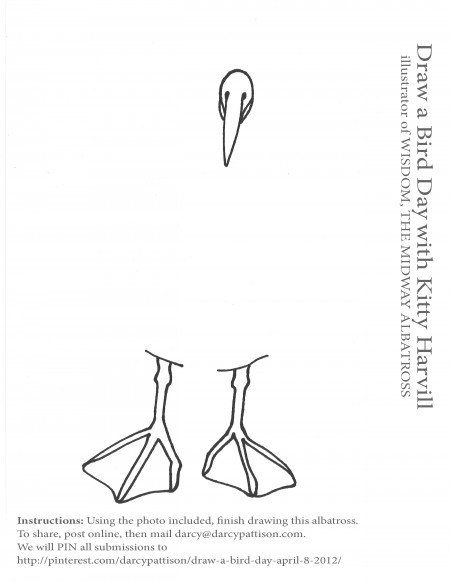
Download the pdf file.
 .
.
















